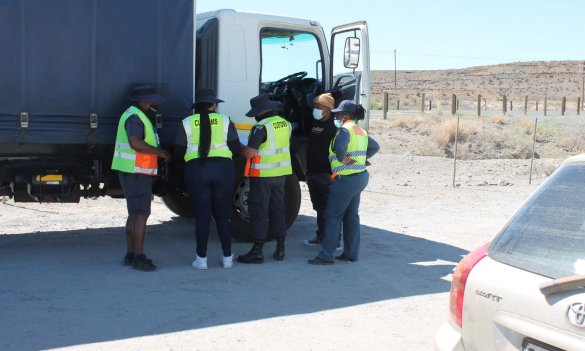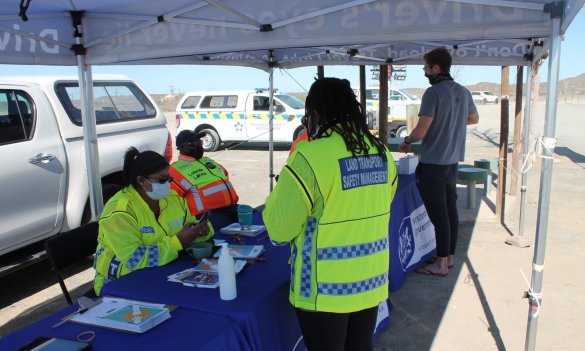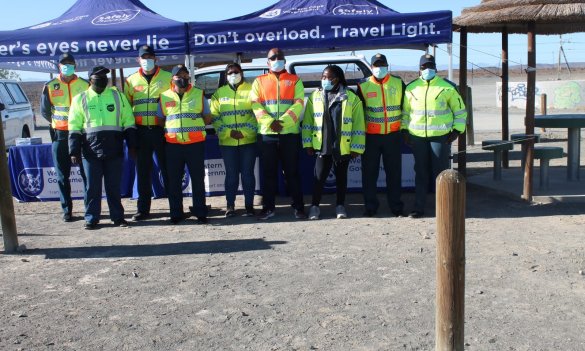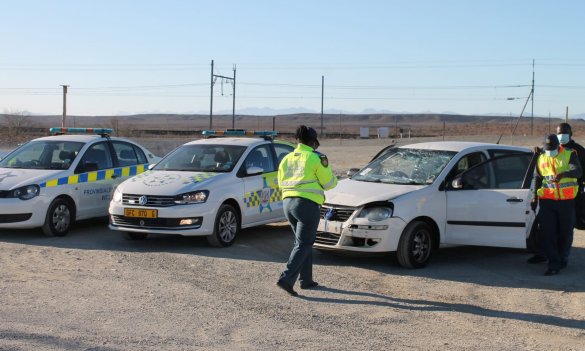Western Cape Provincial Traffic Services implemented a total of 107 integrated roadblocks, vehicle check point and speed control operations across the province in the week of 4 to 10 October 2021, and 19 388 vehicles were stopped and checked. A total of 125 speeding offences were recorded and 3 910 fines were issued for various traffic violations ranging from driver to vehicle fitness in the total amount of R3 821 650.
Forty-six vehicles were impounded and 44 were discontinued for unroadworthiness.
The highest speeds recorded were as follows:
- 160 km/h in a 120 km/h zone
- 144 km/h in a 100 km/h zone
- 114 km/h in a 80 km/h zone
- 109 km/h in a 70 km/h zone
- 89 km/h in a 60 km/h zone
Disaster Management Act
A total of three charges were laid under the Disaster Management Act and fines to the total value of R3 000 were issued.
National Road Traffic Act, Criminal Procedure Act, and Disaster Management Act regulations
A total of 36 arrests were made for the following offences:
- 18 x driving under the influence of alcohol
- 3 x reckless and negligent driving
- 2 x goods overloading
- 5 x possession of fraudulent documentation
- 1 x bribery
- 3 x possession of narcotics
- 1 x possession of firearm
- 1 x operating an unroadworthy vehicle
- 1 x obstructing or hindering an authorised officer in the execution of his/her duty
- 1 x driver consuming intoxicating liquor or narcotic drug after an accident
Fatalities recorded between 4 and 10 October 2021
A total of 25 crashes occurred in the reporting period, and 27 fatalities were recorded:
- 5 x drivers
- 1 x fell off vehicle
- 2 x motorcyclists
- 3 x passengers
- 16 x pedestrians
Buckle up children and watch out for child pedestrians
“Always buckle up children, even on the shortest trip”, says Vigie Chetty, Acting Director: Traffic Law Enforcement. “Slow down wherever there are child pedestrians, they are more vulnerable than you might think.”
Drivers are responsible for ensuring that all passengers are buckled up. Adults are responsible for buckling up children. All small children must be secured in an age-appropriate harness. In a crash, a child who is not secured in an age-appropriate harness becomes a projectile inside the vehicle that can crash into hard surfaces and into other people inside the vehicle, possibly leading to serious injuries and death. In a crash, a child who is not secured in an age-appropriate harness is more likely to be ejected from the vehicle and die or be seriously injured. A serious injury can be life-changing – it may leave a child with a temporary or permanent disability.
A child car seat must be securely fastened so that it does not move around. If you are using a front-facing child seat, the harness slots must be at or above the child’s shoulders. If you are using a rear-facing child seat, use harness slots positioned at or below the child’s shoulders. The correct position for the chest clip is at armpit level. Make sure there is no slack when you pinch the strap at the child’s shoulders. The lap belt should lie snugly across the upper thighs, not the stomach. The shoulder belt should lie snugly across the shoulder and chest, not the neck or face.
Watch out for child pedestrians and slow down when you see them. Young children cannot tell how quickly a vehicle is moving towards them. Children may walk into the road when it is unsafe, or run after a ball or a dog without looking at the traffic. A child pedestrian is much more likely to be seriously injured or killed in a crash. This is because children are shorter than grown-ups, which means they are more likely to be hit in the head and chest.
Protecting child pedestrians depends on drivers being able to see them. Make sure that your children are visible whenever they walk near roads. They should wear light-coloured clothing, or reflective clothing, and should not be near roads at night or when visibility is poor.
Children will follow the example set by their parents, teachers and other adults. Set a good example for children to follow. Model good road safety behaviour for them to follow, such as always buckling up, only crossing the road in safe places, never speeding, and never drinking and driving.
If you drive a public transport vehicle, be extra careful throughout your journey. Watch out for children. Make sure your vehicle is roadworthy and that your operating licence is in order. Ensure that you and all occupants are wearing a mask over their noses and mouths, and are sanitising regularly. Stay off the road during the curfew hours between 00:00 and 04:00.
Observe passenger limits – 100% of licensed carrying capacity for journeys shorter than 200 km, and 70% of carrying capacity for journeys of more than 200 km. Make sure the windows are always at least 5 cm open on both sides of your vehicle.
#SaveKidsLives. For more information, see Safely Home on Facebook and on Twitter @WCGovSafelyHome.




